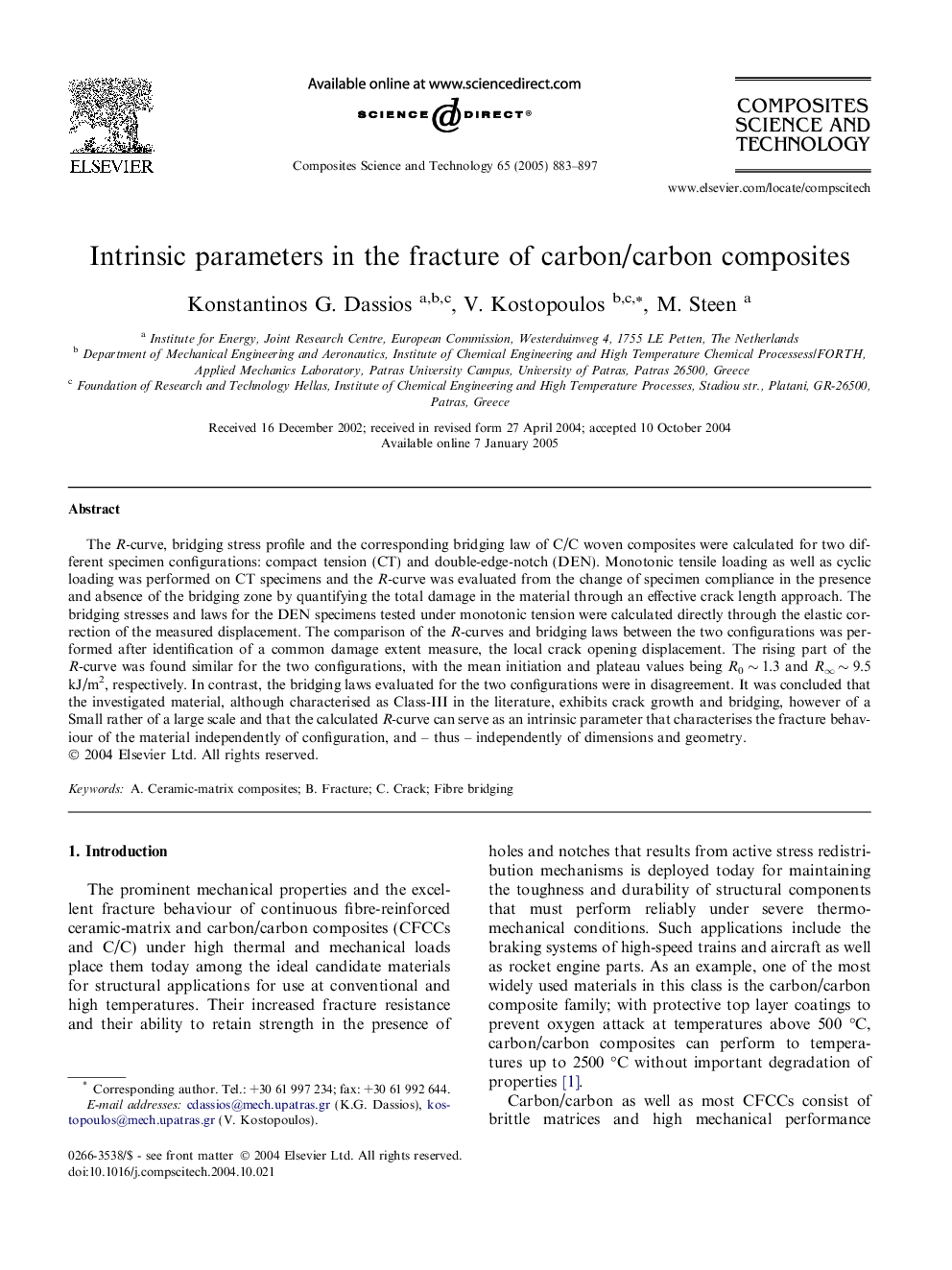| Article ID | Journal | Published Year | Pages | File Type |
|---|---|---|---|---|
| 10425177 | Composites Science and Technology | 2005 | 15 Pages |
Abstract
The R-curve, bridging stress profile and the corresponding bridging law of C/C woven composites were calculated for two different specimen configurations: compact tension (CT) and double-edge-notch (DEN). Monotonic tensile loading as well as cyclic loading was performed on CT specimens and the R-curve was evaluated from the change of specimen compliance in the presence and absence of the bridging zone by quantifying the total damage in the material through an effective crack length approach. The bridging stresses and laws for the DEN specimens tested under monotonic tension were calculated directly through the elastic correction of the measured displacement. The comparison of the R-curves and bridging laws between the two configurations was performed after identification of a common damage extent measure, the local crack opening displacement. The rising part of the R-curve was found similar for the two configurations, with the mean initiation and plateau values being R0 â¼Â 1.3 and Râ â¼Â 9.5 kJ/m2, respectively. In contrast, the bridging laws evaluated for the two configurations were in disagreement. It was concluded that the investigated material, although characterised as Class-III in the literature, exhibits crack growth and bridging, however of a Small rather of a large scale and that the calculated R-curve can serve as an intrinsic parameter that characterises the fracture behaviour of the material independently of configuration, and - thus - independently of dimensions and geometry.
Related Topics
Physical Sciences and Engineering
Engineering
Engineering (General)
Authors
Konstantinos G. Dassios, V. Kostopoulos, M. Steen,
